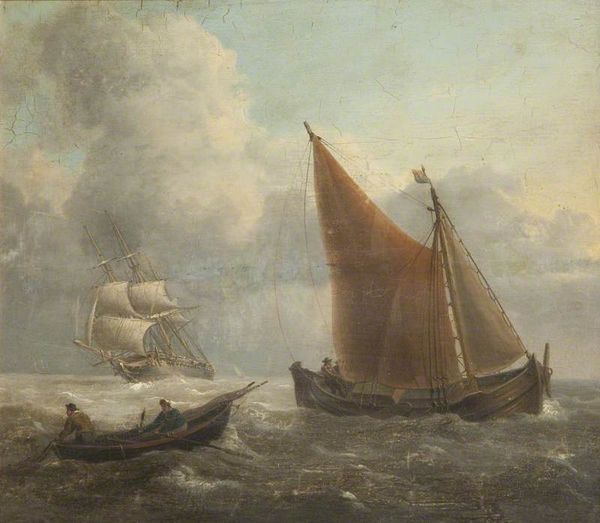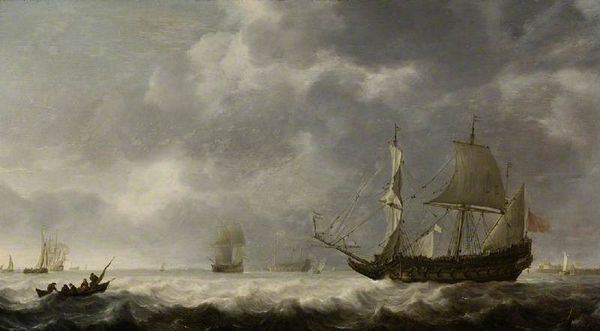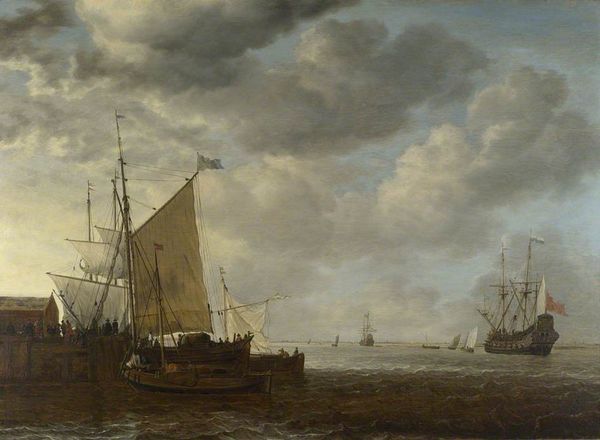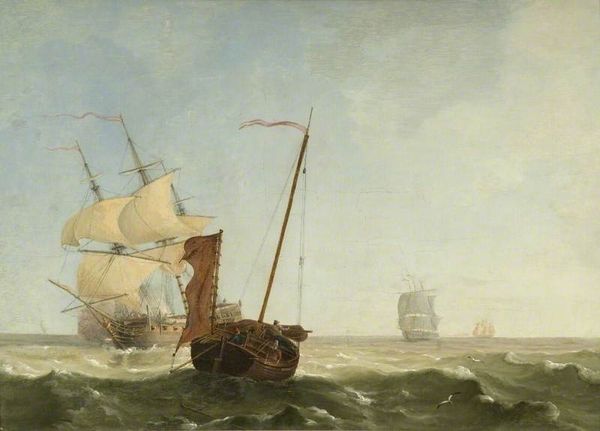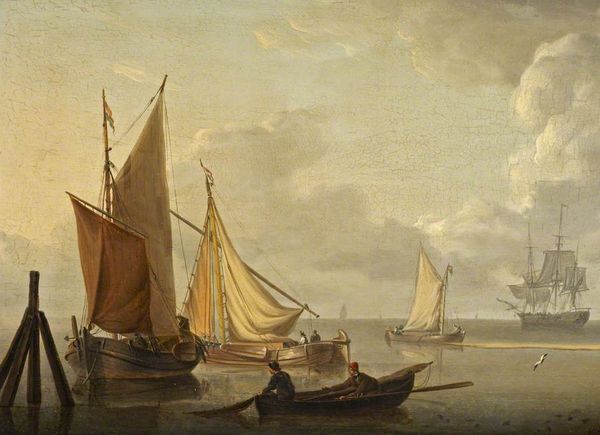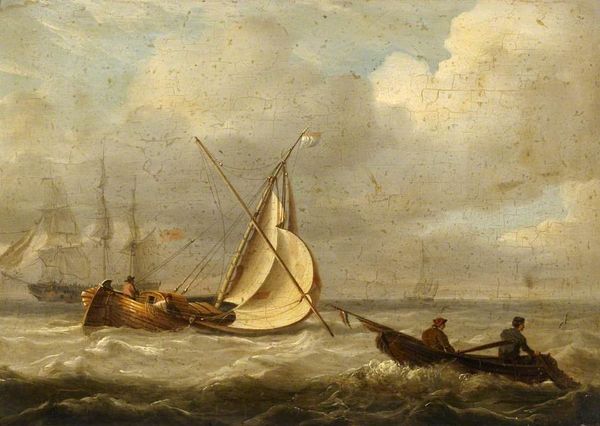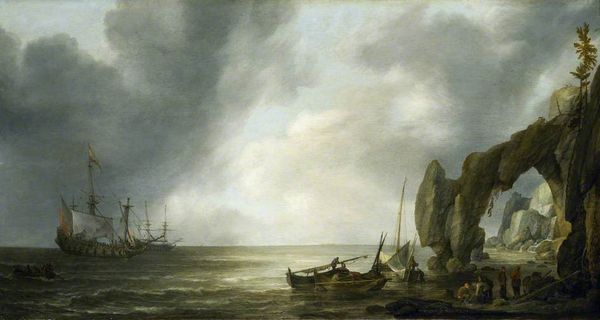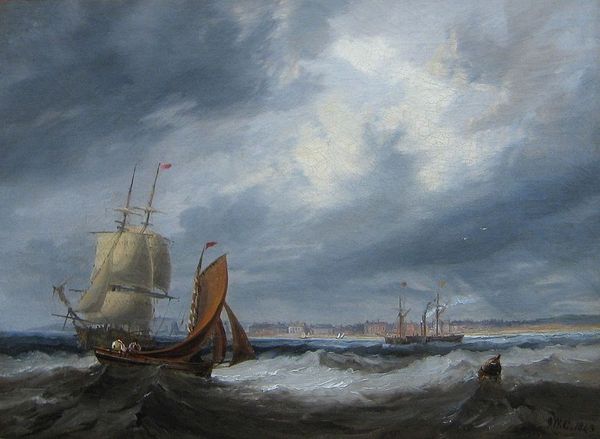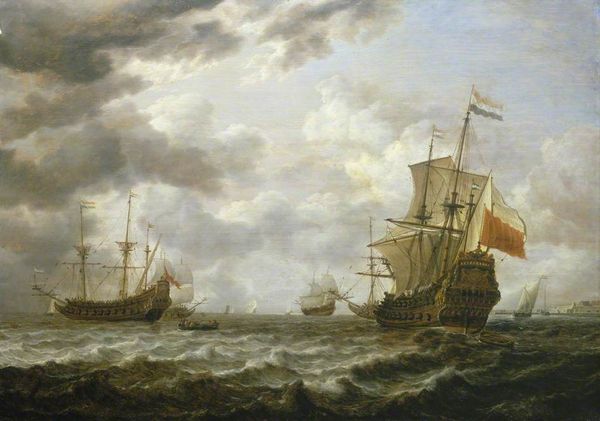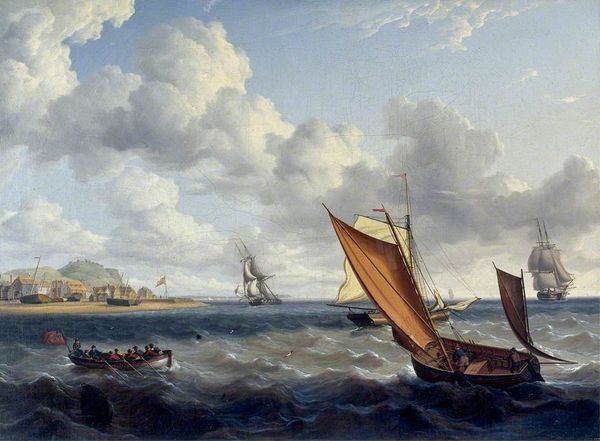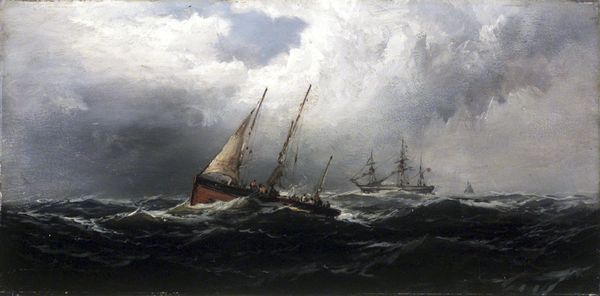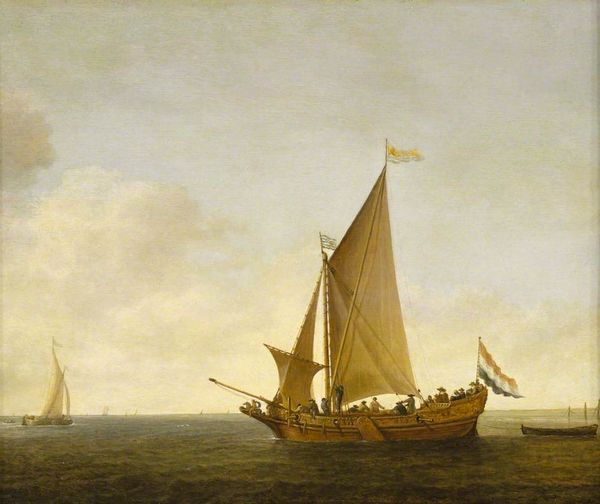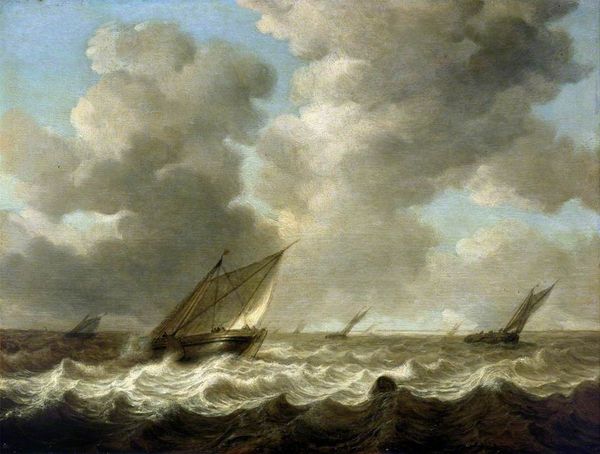
painting, oil-paint
#
boat
#
sky
#
baroque
#
dutch-golden-age
#
ship
#
painting
#
oil-paint
#
landscape
#
water
#
genre-painting
#
realism
Copyright: Public domain
Curator: This is Simon de Vlieger's "A Dutch Man of War and Various Vessels in a Breeze," painted around 1645 using oil paint. It's a classic example of Dutch Golden Age marine painting. Editor: Immediately I'm struck by the quiet drama of the scene, almost monochrome. It feels heavy with the dampness of the air and the subdued palette reflecting the socio-economic climate. Curator: De Vlieger, along with artists like Jan van Goyen, were pioneers in atmospheric perspective, and you see that here. Think about how the paint itself is applied, very thin layers, almost translucent, to capture that atmospheric haze. He achieved an amazing sense of depth with subtle gradations. Editor: Yes, the muted tones are almost protestant in their austerity. During this period, the Dutch Republic was a major naval power and shipping was not just about trade, it was intertwined with issues of colonialism, the slave trade and the exertion of power across continents. Those ships are silent witnesses to exploitation. Curator: Indeed, shipping fueled the Dutch economy. It's worth thinking about how de Vlieger crafted the materiality of the vessels. These weren’t simply aesthetic objects; the choice of wood, the canvas for sails, the rope—everything spoke to available resources, trade routes, and the immense labor required to build and maintain these machines of trade and war. Editor: Precisely, and those very materials often arrived at the Netherlands on those ships after having been forcibly appropriated from colonized lands, reinforcing how aesthetics were built on structural violence and exploitation of both humans and the environment. We have to ask about whose stories aren't being told here in this seemingly placid seascape. Curator: It's important to acknowledge those layered meanings. Focusing on process, even something as simple as the underpainting becomes relevant; he built up the scene carefully to capture the reflective qualities of light on water and cloud, revealing the very specific skill involved in maritime painting. Editor: It reminds us that even ostensibly "realistic" depictions carry ideological weight and can obscure historical realities for specific intentions. I’ll never look at a seascape the same way again. Curator: Thinking about the production of this painting in the studio and what the labor entails and then connecting it to broader social structures creates a far richer narrative.
Comments
No comments
Be the first to comment and join the conversation on the ultimate creative platform.
